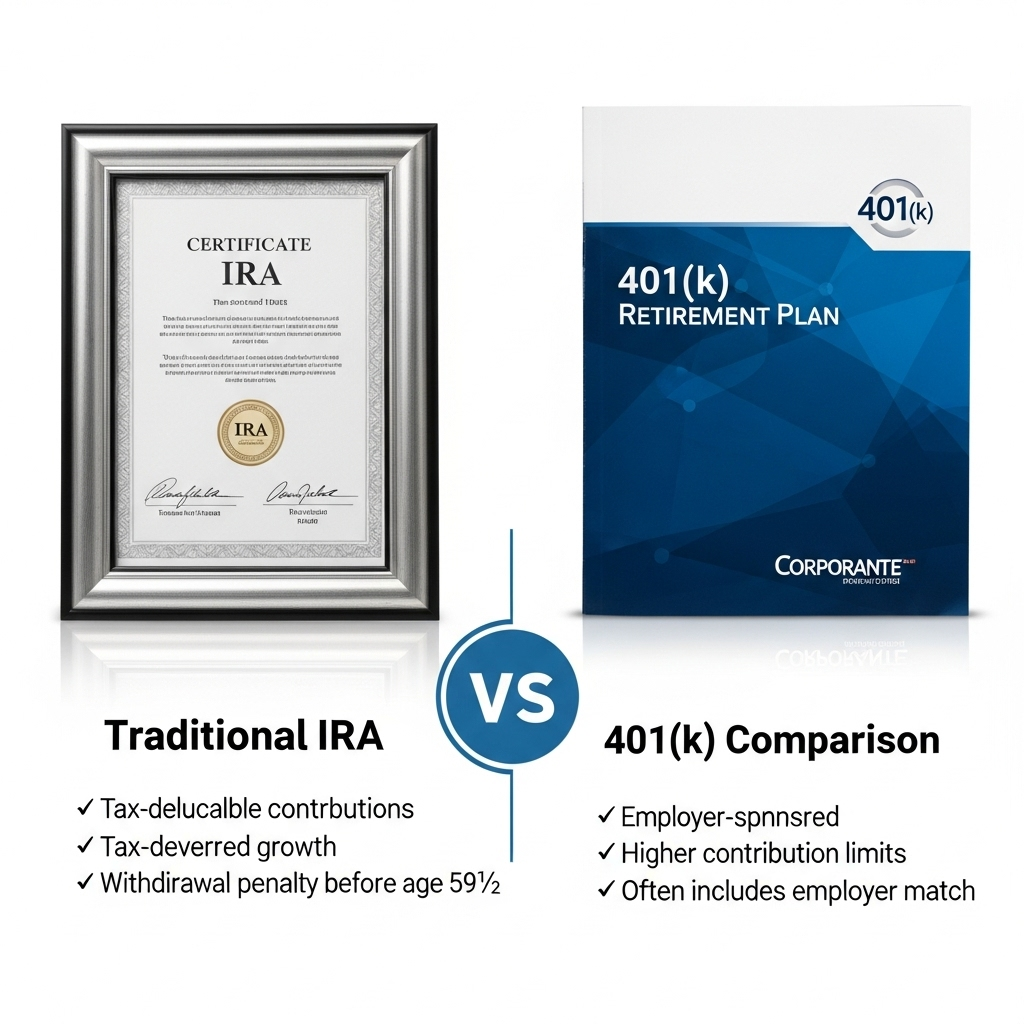Retirement plans: Traditional IRA vs. (k)
Traditional IRAs and 401(k)s are popular retirement savings vehicles, each with distinct features. Understanding their differences is crucial for making informed decisions about your retirement planning strategy.
This comparison analyzes real-world performance, user feedback, and key differentiators to help you make an informed decision.
Quick Verdict
For those seeking higher contribution limits and employer matching, the 401(k) is the superior choice. If investment flexibility and direct control are priorities, the Traditional IRA may be more suitable, especially if employer matching is not available.
- 401(k) plans generally offer higher contribution limits, especially for those over 50.
- Employer matching is a significant advantage of 401(k) plans.
- Traditional IRAs offer more investment flexibility, while 401(k) options are typically more limited.
Who Should Choose Which?
Choose Traditional IRA if:
Individuals seeking investment flexibility, control over their retirement savings, and who may not have access to a 401(k) or wish to supplement their retirement savings.
Choose 401(k) if:
Employees who want to maximize their retirement savings through higher contribution limits and employer matching, and who prefer the convenience of payroll deductions.

Key features – Side-by-Side
| Attribute | Traditional IRA | (k) |
|---|---|---|
| Contribution Limits (Under 50) | $7,000 | — |
| Contribution Limits (50+) | $8,000 | — |
| Tax Deduction | May be deductible depending on income and retirement plan coverage | — |
| Employer Matching | Not applicable | — |
| RMD Start Age | 73 | — |
| Early Withdrawal Penalty | 10% (with exceptions) | — |
Overall Comparison
Pros and Cons
Traditional IRA
- Tax-deductible contributions may lower current income taxes
- Investment earnings grow tax-deferred
- Variety of investment options available
- Rollover options from other retirement accounts
- Withdrawal flexibility
- Contribution limits may be lower than other retirement plans
- Tax deduction limitations if covered by a retirement plan at work
- Required Minimum Distributions (RMDs) are mandatory after age 73
- Early withdrawals before age 59½ may be subject to penalties and taxes
- Employer matching does not apply
Traditional IRA and 401(k) Plans
- Tax-deductible contributions (Traditional IRA and 401(k))
- Tax-deferred growth (Traditional IRA and 401(k))
- Employer matching contributions (401(k))
- Wide range of investment options (Traditional IRA)
- Payroll deductions for contributions (401(k))
- Rollover options from other retirement accounts (Traditional IRA and 401(k))
- Income limitations for deducting Traditional IRA contributions if covered by a retirement plan at work
- Required Minimum Distributions (RMDs) starting at age 73 (Traditional IRA and 401(k))
- Early withdrawal penalties before age 59½ (Traditional IRA and 401(k))
- Fees associated with accounts can impact overall returns (Traditional IRA and 401(k))
- Limited investment options compared to Traditional IRA (401(k))
User Experiences and Feedback
Traditional IRA
- No highlights reported.
- No major complaints reported.
- No value feedback reported.
Traditional IRA and 401(k) Plans
- No highlights reported.
- No major complaints reported.
- No value feedback reported.
Frequently Asked Questions
What happens to my 401(k) when I leave my job?
You can roll it over into a Traditional IRA, your new employer's 401(k) (if allowed), or leave it in your old employer's plan (if the balance is over $7,000 and the plan allows).
Can I contribute to both a Traditional IRA and a 401(k)?
Yes, you can contribute to both, but contributing to a 401(k) may affect the deductibility of your Traditional IRA contributions.
Sources & Citations
- Official product specifications
- Expert reviews from tech publications
- User feedback from online forums
Information gathered through AI-assisted web search and analysis. Last updated: August 2025
Methodology & Transparency
Our comparison methodology combines multiple data sources to provide comprehensive, unbiased analysis:
- Data Collection: We gather information from official specifications, user reviews, and independent testing
- AI-Assisted Analysis: Advanced AI helps process large amounts of data while maintaining accuracy
- Human Oversight: All comparisons are reviewed for accuracy and relevance
- Regular Updates: Content is refreshed to reflect new information and user feedback
- Bias Mitigation: We strive for objectivity by considering multiple perspectives and sources
Versusly.ai uses AI-assisted content generation combined with human oversight to deliver comprehensive comparisons. We are transparent about our process and continuously work to improve accuracy and usefulness.